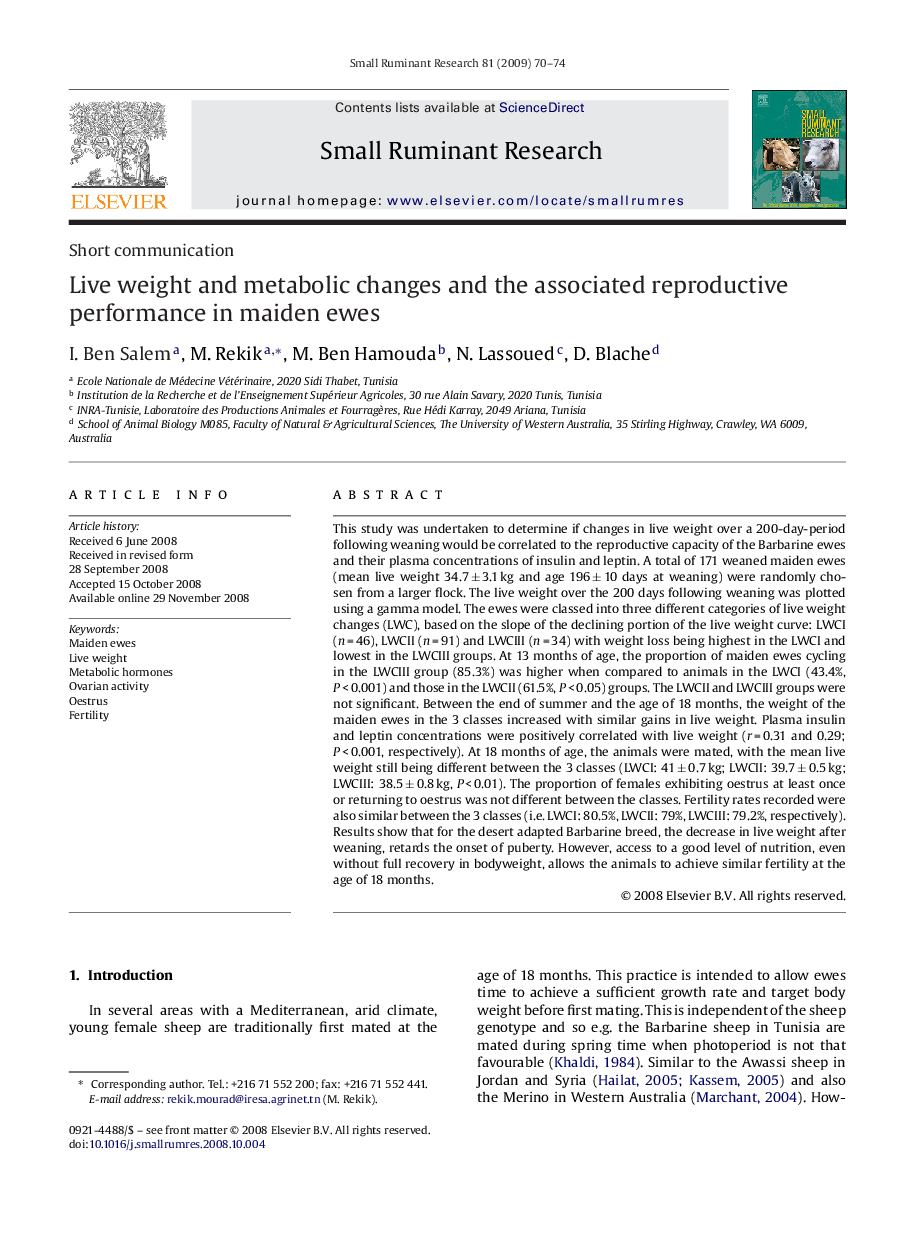| کد مقاله | کد نشریه | سال انتشار | مقاله انگلیسی | نسخه تمام متن |
|---|---|---|---|---|
| 2457788 | 1110730 | 2009 | 5 صفحه PDF | دانلود رایگان |

This study was undertaken to determine if changes in live weight over a 200-day-period following weaning would be correlated to the reproductive capacity of the Barbarine ewes and their plasma concentrations of insulin and leptin. A total of 171 weaned maiden ewes (mean live weight 34.7 ± 3.1 kg and age 196 ± 10 days at weaning) were randomly chosen from a larger flock. The live weight over the 200 days following weaning was plotted using a gamma model. The ewes were classed into three different categories of live weight changes (LWC), based on the slope of the declining portion of the live weight curve: LWCI (n = 46), LWCII (n = 91) and LWCIII (n = 34) with weight loss being highest in the LWCI and lowest in the LWCIII groups. At 13 months of age, the proportion of maiden ewes cycling in the LWCIII group (85.3%) was higher when compared to animals in the LWCI (43.4%, P < 0.001) and those in the LWCII (61.5%, P < 0.05) groups. The LWCII and LWCIII groups were not significant. Between the end of summer and the age of 18 months, the weight of the maiden ewes in the 3 classes increased with similar gains in live weight. Plasma insulin and leptin concentrations were positively correlated with live weight (r = 0.31 and 0.29; P < 0.001, respectively). At 18 months of age, the animals were mated, with the mean live weight still being different between the 3 classes (LWCI: 41 ± 0.7 kg; LWCII: 39.7 ± 0.5 kg; LWCIII: 38.5 ± 0.8 kg, P < 0.01). The proportion of females exhibiting oestrus at least once or returning to oestrus was not different between the classes. Fertility rates recorded were also similar between the 3 classes (i.e. LWCI: 80.5%, LWCII: 79%, LWCIII: 79.2%, respectively). Results show that for the desert adapted Barbarine breed, the decrease in live weight after weaning, retards the onset of puberty. However, access to a good level of nutrition, even without full recovery in bodyweight, allows the animals to achieve similar fertility at the age of 18 months.
Journal: Small Ruminant Research - Volume 81, Issue 1, January 2009, Pages 70–74